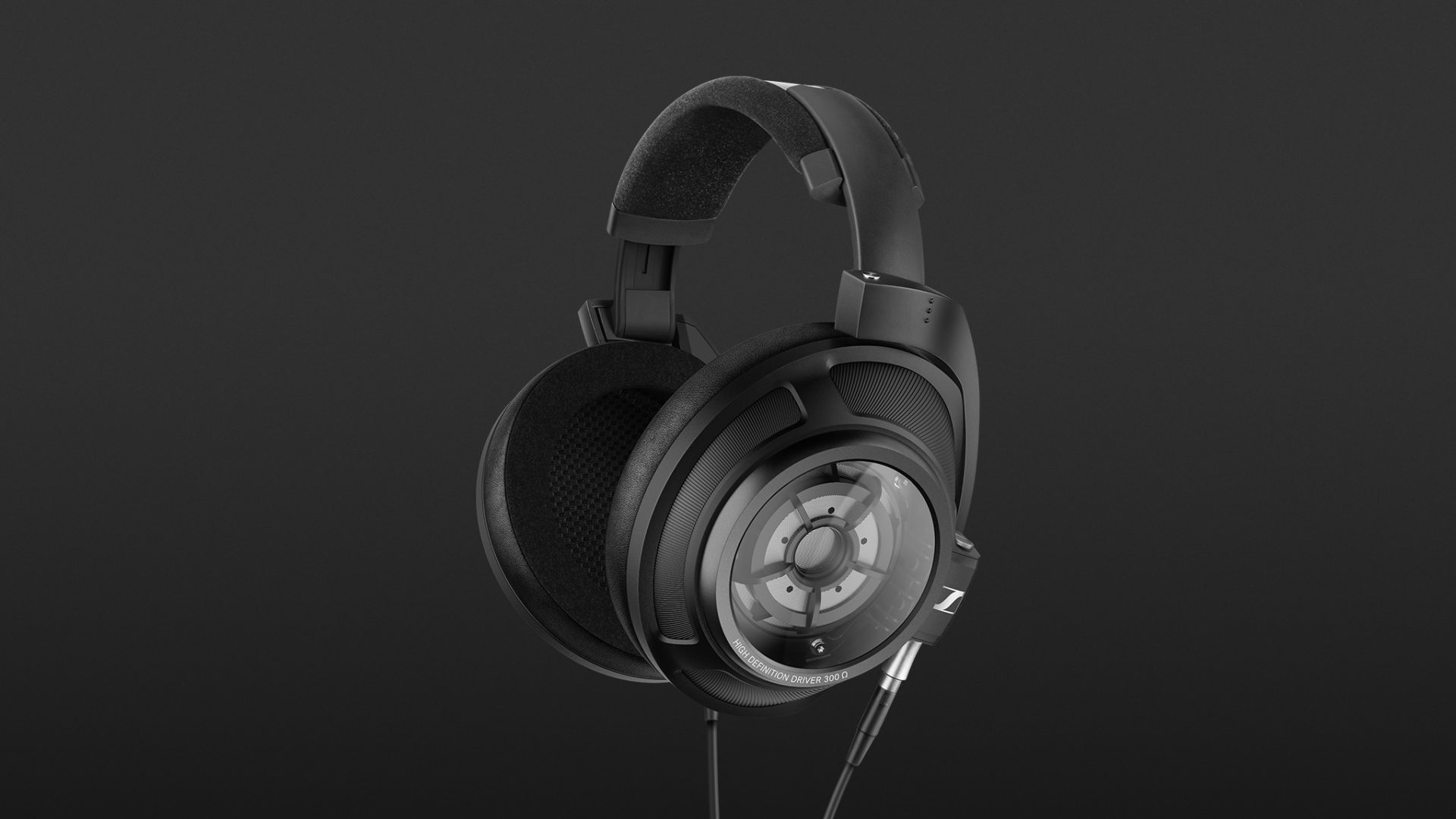With the HD 820, Sennheiser caters to the audiophile market with a pair of closed headphones. The device explores the limits of this design class in new ways and indeed delivers a wonderfully open and extraordinarily detailed sound experience that earns top marks in the disciplines of dynamics, stereo panorama and space. This is to be expected at a price of more than 2,000 Euros, but it is nevertheless remarkable. In terms of sound, there is virtually nothing to complain about, provided you have a good headphone amplifier. The HD 820 are therefore recommended for the discerning music lover as well as for professional users, both for sound engineers who rely on closed headphones, but also for demanding voice artists. In all cases, the performance offered is excellent.
The decision to buy the HD 820 is likely to be based on the desire or need for a closed system. If this prerequisite is not the case, the HD 800 S are cheaper and obtain at least equivalent results. From this point of view, the HD 820 could well be offered at a somewhat lower price.
With the HD 820, Sennheiser has followed the outstanding HD 800 S with a top-of-the-range closed model for a particularly demanding clientele.
This model was designed to deliver the best possible audiophile headphone sound characteristics in a closed system. Sennheiser cites regular customer requests, often from Asia, as the motivation for this. In cramped living situations, in particular, the advantages of closed designs with their improved noise isolation from the environment become apparent. The reduced sound leakage from roommates’ devices is also appreciated. This latter characteristic also predestines such headphones for professional working environments, where closed systems are always in demand to prevent the monitor signal spilling over into the microphone during a recording.
Sennheiser has set itself a challenging task with the HD 820 because the closed design has the conceptual disadvantage of the diaphragms in the housing not vibrating as freely as in open systems. The dynamic HD 820 is manufactured by hand in Germany and comes with extensive quality assurance. According to the manufacturer, even more effort is required to achieve the corresponding sound performance than with the HD 800 S, which also explains the higher price.
The HD 820, which are predominantly black, are excellently finished and have a very high-quality design – they also come in a wooden storage box. The headband and the oversized ear cups are elaborately padded with microfibre – which is also handcrafted. In addition, a damping element has been integrated into the length-adjustable metal headband to filter out low-frequency noise. The ear cups can be moved slightly to adapt optimally to the shape of the head. All cushions can be replaced if necessary. The same applies to the ear cups.
The same goes for the silver-plated cables made of oxygen-free copper and gold-plated plugs. They are routed to the ear cups on both sides. The HD 820 are delivered with two cables: a variant with a 6.3 mm jack and a balanced adapted variant with a 4.4 mm Pentaconn plug. A balanced cable with an XLR-4 connector is also available as an option.
An important and by no means merely aesthetic element of the HD 820 are the large diaphragms, ring radiators, which are protected on the outside by concave glass covers. This provides a decorative view of the driver, but its main purpose is to divert reflections to an internal absorber. And sound that is absorbed cannot be reflected back in a disturbing way.
The diaphragms used are just as large as those in the HD 800 S, with a diameter of 56 mm. As in that model, the drivers are encased in stainless steel and slightly angled, which should improve spatial perception. Likewise, the enclosure features a stainless steel mesh absorber chamber for the clearest possible reproduction. At 360 grams, the HD 820 are nevertheless surprisingly light.
Practice
I liked the wearing comfort immensely, even during longer listening sessions. The large ear cushions ensured a comfortable and thoroughly secure fit at home or in a work environment. At the same time, the sound insulation to the outside was good. Functionally, the HD 820 have a clear mission: they should deliver first-class sound quality when listening to music and also do the job honestly and reliably in professional use. There are no extras apart from the optional cable connection, and why should there be? The connection cables themselves are of high quality and securely anchor to the ear cups. At three metres long, they are also suitable for working with a large mixing console.
In this performance class, headphones explicitly benefit from a high-quality headphone amplifier. In our test, Sennheiser’s own HDV 820 as well as the SPL Phonitor se and RME ADI-2 Pro FS were used. In all cases, their use made a noticeable difference compared to a conventional headphone amplifier from an audio interface.
Sound
Sennheiser’s goal with the HD 820 is to capture the sound impression of high-quality open headphones. This is ambitious, but they definitely succeed. First of all, the HD 820, like the HD 800 S, do not turn themselves into loudspeakers. You can turn up the headphone amplifier further or use the balanced connection.
From the very first note, the wonderfully airy reproduction is impressive, something you hardly ever find in closed systems. An excellent level goes without saying. The headphones reproduce a finely graduated and consistently wide stage with comprehensible spatial representation, where movements can be understood almost three-dimensionally.
Generally, the richness of detail is at the highest level. This is accompanied by an outstanding temporal resolution, which makes the finest nuances audible, for example, with multiple and doubled instruments or short echo effects. This is noticeable with acoustic instruments as well as with voices. With professional mixes, the HD 820 knows how to distinguish razor-sharp from older or less high-quality recordings, this results in an intense intimacy or a magnifying glass-like insight into the sound material.
The reproduction of the frequency response is complete and ranges from the deepest bass to the finest treble. I would describe the bass range as warm, well-contoured, dynamic and punchy, but never overemphasised. The test model was not quite as streamlined as the HD 800 S, but it does not need to be over-emphasised. Even the low bass hardly ever blows up in your face. The tonally tuned 808 bass drum in Adel Tawil’s “Katsching (Alles Lebt)”, for example, revealed not only a clearly comprehensible pitch but also a perfectly controlled time progression. The HD 820 deliver an honest sound image where most consumer products tend to exaggerate. Professionals should appreciate this, but also know how to evaluate it.
At the other end of the spectrum, the HD 820 were open and airy with the necessary punch, but without harshness. Indeed, the limit of a mix was precisely explored.
Finally, the entire midrange was impressive all around. The HD 820 deliver the essence of acoustic and electronic instruments, conveying the content of even the most complex mixes and transporting the dynamics of jazz, the grandeur of an orchestral soundscape or the thrust of a rock production. With appropriate mixes, everything comes together to form a coherent sound that can be enjoyed to the full or evaluated analytically.
With these characteristics, the HD 820 can be used across genres. If you were expecting a glossy or superficial sound, you would be wrong. This means that even with poor quality sources, the sound can be honestly flat or dull. Conversely, one is constantly delighted to discover small embellishments that are easily lost in more straightforward productions.
The basic tuning is similar to the HD 800 S, though it adds a touch of extra airiness and attention to detail. The HD 820 were a little more powerfully tuned in the bass range and fuller in the midrange – it’s all a matter of taste.
Technical specifications
- Ear couplingOver-ear
- Typeclosed
- Transducer principledynamic
- Frequency response (headphones)12 - 43.800 Hz (-3 dB); 6 - 48.000 Hz (-10 dB)
- Impedance300 ohms
- Sound pressure level (SPL)@1 kHz/1V: 103 dB
- Weight without cable360 g
- Cable length300 cm
What's in the box
- Unbalanced jack cable with 6.35 mm plug
- Balanced cable with 4.4 mm Pentaconn plug
- USB stick (SD-U16L) with instruction manual (as PDF file) and frequency response measurement report
- Microfibre cloth
- Wooden storage box









































